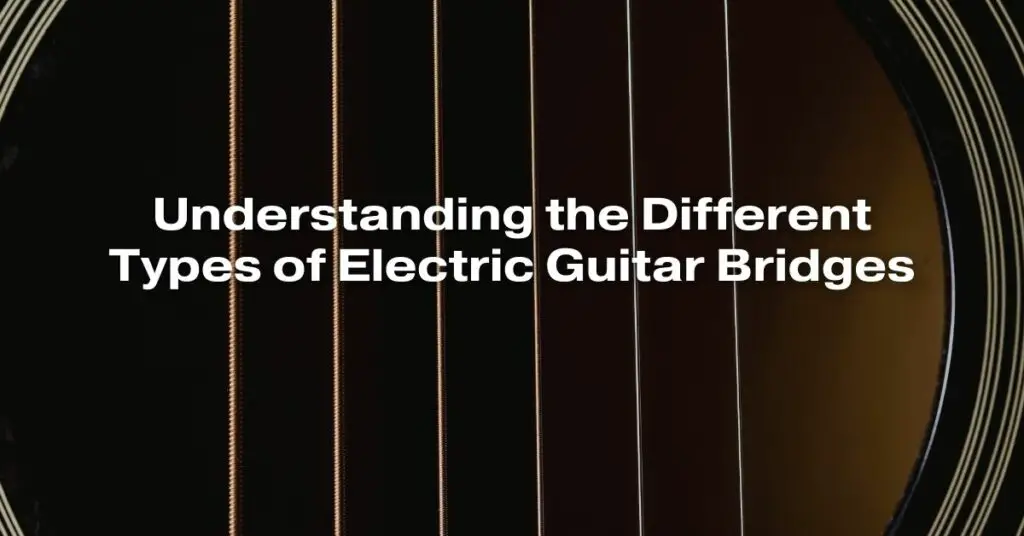The electric guitar, a staple in modern music, comes in various shapes and sizes, each with its unique characteristics and features. One of the essential components of an electric guitar is its bridge. The bridge plays a crucial role in shaping the guitar’s tone and determining how it feels to play. There are several types of electric guitar bridges, each offering distinct advantages and disadvantages. In this comprehensive guide, we will explore the different types of electric guitar bridges and their impact on your playing experience and sound.
1. Fixed Bridges:
Hardtail Bridges:
Hardtail bridges are simple, sturdy, and offer excellent sustain and tuning stability. They are fixed bridges, meaning they do not have any moving parts. Hardtail bridges are common on classic Fender Stratocasters and Telecasters. Players who prefer a solid connection between the guitar strings and the body often opt for hardtail bridges.
Wraparound Bridges:
Wraparound bridges are found on many Gibson electric guitars. They are compact and straightforward, providing a direct transfer of vibrations to the guitar body. While they lack individual string intonation adjustments, many players appreciate their simplicity and vintage vibe.
2. Tremolo Bridges:
Floyd Rose Tremolo:
Floyd Rose tremolos are double-locking systems known for their exceptional tuning stability, making them popular among players who perform aggressive tremolo techniques. They allow for extreme pitch bending both up and down without sacrificing tuning integrity. However, they are complex to set up and restring, requiring patience and precision.
Stratocaster Tremolo:
Stratocaster tremolo bridges, also known as synchronized tremolos, are iconic and widely used. They allow subtle pitch modulation and are relatively easy to use. Stratocaster tremolos are versatile and are favored by players who enjoy smooth vibrato effects. However, they might not offer the same stability as Floyd Rose systems, especially during heavy use.
Bigsby Vibrato:
Bigsby vibratos are unique in their design, providing a smooth, subtle vibrato effect. They are often seen on semi-hollow and hollow-body guitars, adding a touch of vintage elegance. While they do not offer the same extreme pitch modulation as other tremolo systems, they provide a distinctive character to the guitar’s sound.
3. Locking Bridges:
Graphtech Ghost System:
The Graphtech Ghost System combines piezo pickups with a traditional magnetic pickup system. This innovative bridge allows players to blend the natural, acoustic-like tones of piezo pickups with the classic electric guitar sound. It offers a wide range of tonal possibilities, making it suitable for various playing styles and genres.
RMC Poly-Drive System:
The RMC Poly-Drive System is a sophisticated bridge that incorporates individual piezo pickups for each string. This advanced setup provides exceptional clarity and dynamics, making it ideal for professional recording and live performances. The ability to blend the piezo and magnetic pickups offers unmatched tonal versatility.
In conclusion, choosing the right electric guitar bridge depends on your playing style, preferences, and the sound you want to achieve. Whether you prefer the simplicity of a fixed bridge, the versatility of a tremolo system, or the advanced features of a locking bridge, understanding the different types of electric guitar bridges empowers you to make an informed decision. Each type has its unique advantages, so experimenting with different bridges can lead to discovering the perfect match for your musical expression. Remember that the best bridge for you is the one that complements your playing style and inspires you to create exceptional music.


